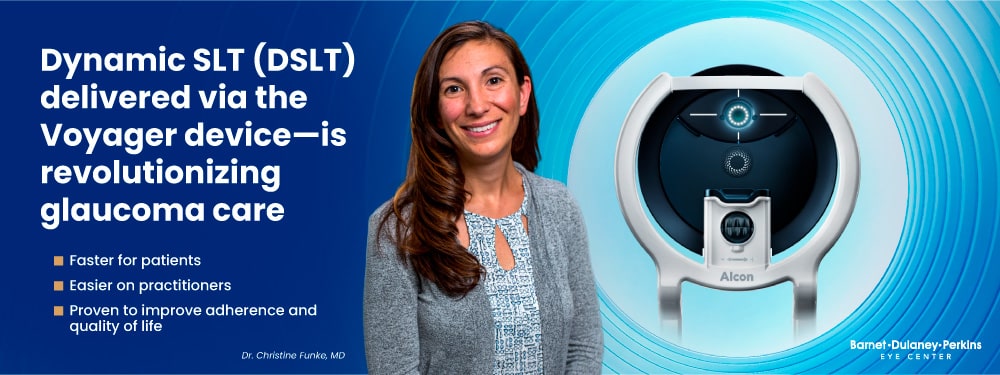
Glaucoma
What Is Glaucoma?
Glaucoma is an eye disease that gradually damages the optic nerve. If left untreated, it can lead to vision loss and blindness. In the United States, glaucoma is the leading cause of irreversible vision loss.
The drainage system often becomes clogged, so the aqueous humor cannot drain. When this happens, pressure (intraocular pressure) builds up inside the eye. High pressure can damage the optic nerve, leading to vision loss.
The optic disc is where the optic nerve connects to the eye. As pressure increases, nerve fibers in the optic nerve begin to die. When this happens, the disc starts to hollow out and become cupped.
Early detection and treatment often help to prevent severe vision loss.
Who is at Risk for Glaucoma?
Anyone is at risk, but there are factors that increase the risk for glaucoma:
- Age (especially those over 60 years of age)
- Myopia (nearsightedness)
- Long-term use of steroids
- Thin corneas
- African American, Asian or Hispanic descent
- Family history of glaucoma
The best way to avoid the negative consequences of this disease is to undergo regular glaucoma examinations. Our practice has locations throughout the state, from Flagstaff to Tucson, where you can talk to an experienced optometrist or ophthalmologist and learn more about glaucoma treatment options.
Types of Glaucoma
Primary Open-Angle Glaucoma
Primary open-angle glaucoma is the most common form of glaucoma. It develops gradually as the eye’s drainage canals become slowly clogged, increasing pressure inside the eye. Because it progresses so slowly and typically has no early warning signs, it can be difficult to detect without regular eye exams.
Angle-Closure Glaucoma
Angle-closure glaucoma, also known as narrow-angle or acute glaucoma, is a less common but serious form of glaucoma. It occurs when the drainage angle between the iris and cornea becomes too narrow, preventing proper fluid outflow and causing a sudden rise in eye pressure. This can happen rapidly, especially if the pupil dilates too quickly, allowing the iris to block the drainage canals.
Normal-tension Glaucoma
Normal-tension glaucoma is a form of glaucoma in which damage to the optic nerve occurs despite normal eye pressure levels. Although rare, it can still lead to vision loss over time. People at higher risk include those with a family history of the condition, individuals of Japanese descent, and those with health conditions such as migraines, Raynaud’s disease, irregular heart rhythms, or sleep apnea. Because eye pressure remains within normal limits, regular eye exams are crucial for early detection.


